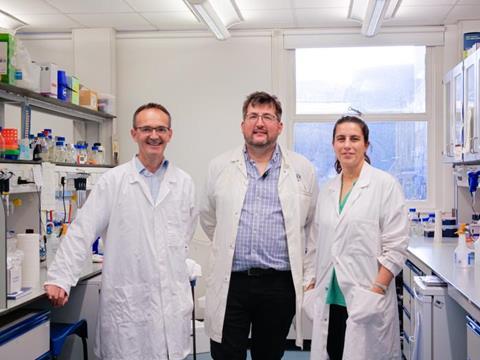Chemists from the University of Warwick and Monash University have discovered a promising new antibiotic that shows activity against drug-resistant bacterial pathogens, including MRSA and VRE.

Antimicrobial resistance (AMR) is one of the world’s most urgent health challenges, with the WHO’s new report showing there are ‘too few antibacterials in the pipeline’. Most of the ‘low-hanging fruit’ has already been found, and the limited commercial incentives deter investment in antibiotic discovery.
READ MORE: Friendly soil microbes can boost protein in staple crops
READ MORE: Yellow pigment from Streptomyces coelicolor offers potential weapon against breast cancer
In a new study published in the Journal of the American Chemical Society, researchers from the Monash Warwick Alliance Combatting Emerging Superbug Threats Initiative have discovered a promising new antibiotic - pre-methylenomycin C lactone. The newly discovered antibiotic was ‘hiding in plain sight’ — as an intermediate chemical in the natural process that produces the well-known antibiotic methylenomycin A.
Synthetic intermediates
Co-lead author of the study, Professor Greg Challis, in the Department of Chemistry at the University of Warwick, and Biomedicine Discovery Institute at Monash University says: “Methylenomycin A was originally discovered 50 years ago and while it has been synthesized several times, no-one appears to have tested the synthetic intermediates for antimicrobial activity! By deleting biosynthetic genes, we discovered two previously unknown biosynthetic intermediates, both of which are much more potent antibiotics than methylenomycin A itself.”
When tested for antimicrobial activity, one of the intermediates, pre-methylenomycin C lactone, was shown to be over 100 times more active against diverse Gram-positive bacteria than the original antibiotic methylenomycin A. Specifically, it was shown to be effective against S. aureus and E. faecium, the bacterial species behind Methicillin-resistant Staphylococcus aureus (MRSA) and Vancomycin-resistant Enterococcus (VRE) respectively.
Real surprise
Co-lead author Dr. Lona Alkhalaf, Assistant Professor, University of Warwick adds: “Remarkably, the bacterium that makes methylenomycin A and pre-methylenomycin C lactone — Streptomyces coelicolor — is a model antibiotic-producing species that’s been studied extensively since the 1950s. Finding a new antibiotic in such a familiar organism was a real surprise.”
“It looks like S. coelicolor originally evolved to produce a powerful antibiotic (pre-methylenomycin C lactone), but over time has changed it into methylenomycin A — a much weaker antibiotic that may play a different role in the bacterium’s biology.”
Importantly, the researchers could not detect any emergence of resistance to pre-methylenomycin C lactone in Enterococcus bacteria under conditions where vancomycin resistance is observed. Vancomycin is a “last line” treatment for Enterococcus infection, so this finding is especially promising for VRE, a WHO High Priority Pathogen.
Professor Challis continues: “This discovery suggests a new paradigm for antibiotic discovery. By identifying and testing intermediates in the pathways to diverse natural compounds, we may find potent new antibiotics with more resilience to resistance that will aid us in the fight against AMR.”
Next step
The next step in the development of the antibiotic will be pre-clinical testing. In a coordinated publication earlier this year in the Journal of Organic Chemistry, a team led by Monash collaborating with the Warwick team and funded by the Monash Warwick Alliance Combatting Emerging Superbug Threats initiative reported a scalable synthesis of pre-methylenomycin C lactone, paving the way for further research.
Professor David Lupton, School of Chemistry, Monash University who led the synthesis work says: “This synthetic route should enable the creation of diverse analogues that can be used to probe the structure−activity relationship and mechanism of action for pre-methylenomycin C lactone. The Centre to Impact AMR at Monash gives us a great platform to take this promising antimicrobial forward.”
With its simple structure, potent activity, difficult to resist profile, and scalable synthesis, pre-methylenomycin C lactone represents a promising new candidate that could potentially help to save some of the 1.1 million people who are the victims of AMR every year.







No comments yet